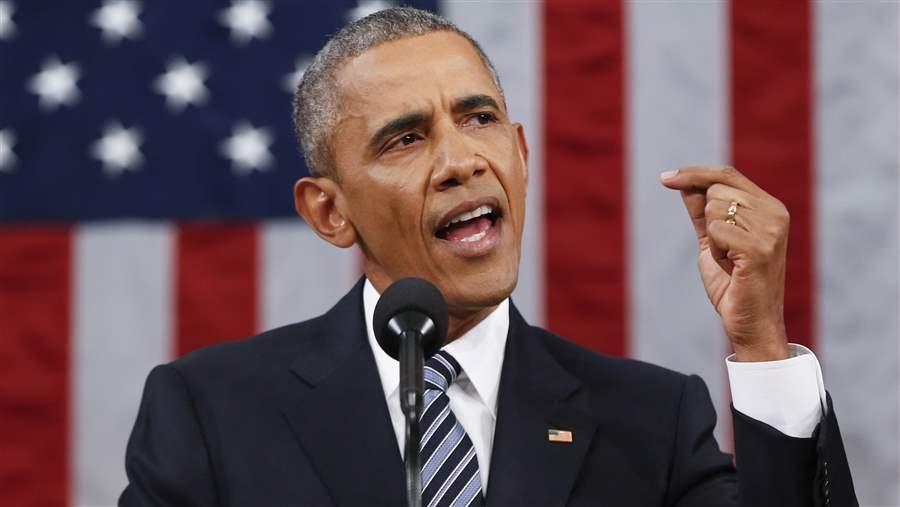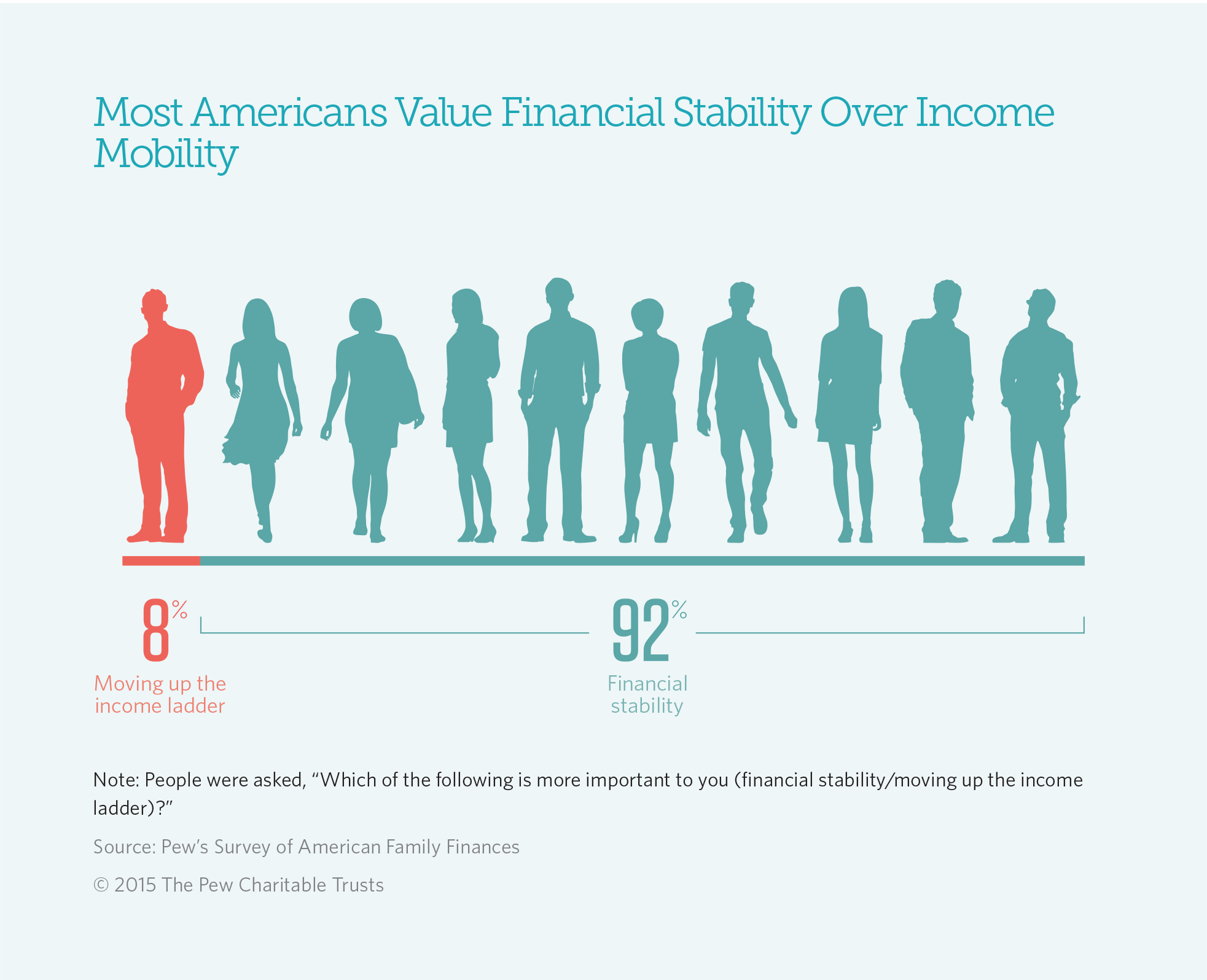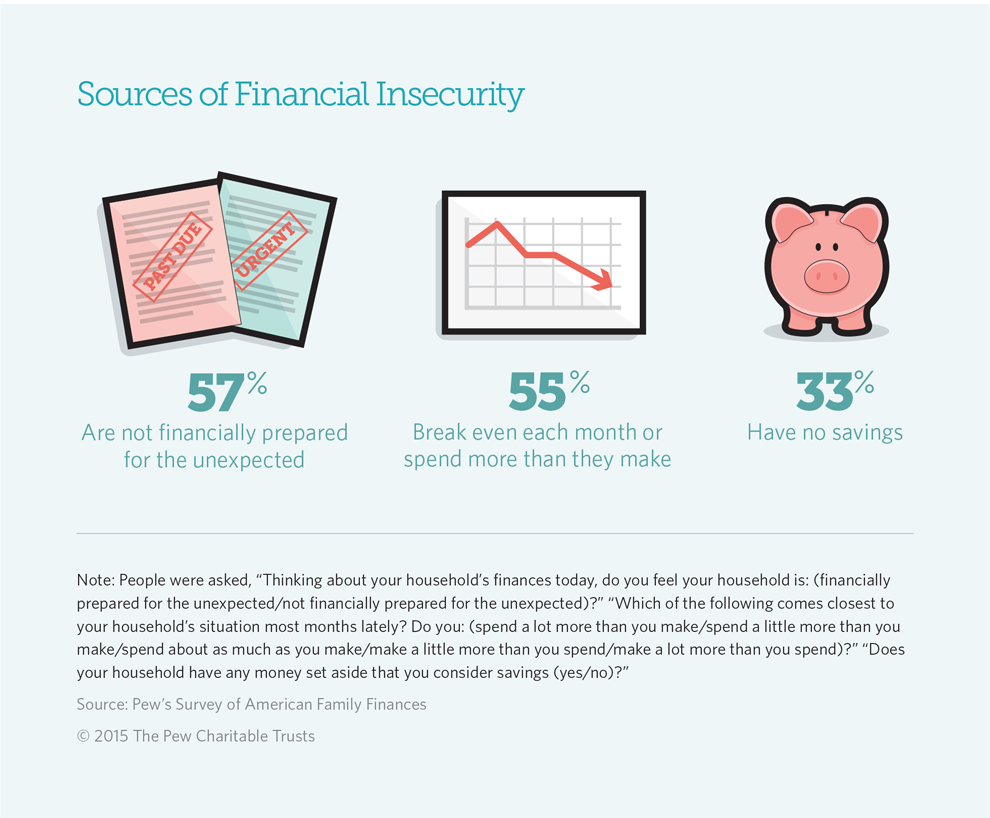State of the Union 2016: Securing the American Dream
President Obama focused on the importance of opportunity and family financial security in his speech. Here’s what the data say.
 Getty Images
Getty ImagesPresident Barack Obama speaks to Congress during his 2016 State of the Union address.
In his final State of the Union address Jan. 12, President Barack Obama asked: “How do we give everyone a fair shot at opportunity and security in this new economy?”
That is an important question, and one that Pew has long supported and studied. Although no single strategy can enhance economic opportunity for everyone, our research clearly shows that it is hard for families to be upwardly mobile if they aren’t first financially secure.
Job growth is up, but Americans remain concerned
The U.S. economy added nearly 2.7 million jobs in 2015, dropping the unemployment rate to 5 percent. However, five years after the Great Recession, many families still feel financially vulnerable and have doubts about their chances of attaining the American Dream:
- Among those who said they worry about their finances, more than 8 in 10 are concerned about a lack of savings, 71 percent fear they don’t have enough money to cover their expenses, and 7 in 10 think they won’t have enough money for retirement.1
- When asked whether they would prefer to have financial stability or to move up the income ladder, 92 percent of Americans chose security, an increase of 7 percentage points since 2011.
In 2009, nearly 4 in 10 Americans said they felt it was common for a person to start poor, work hard, and become rich. Five years later, that number had declined to 23 percent.

Income instability puts pressure on savings
From 1999 to 2009, the most recent full decade for which statistics are available, earnings grew little for the typical worker and income was often volatile,2 with more than half of households reporting that their income or expenses varied from month to month.3 Such unpredictability makes it difficult for households to plan and save.

Not surprisingly, then, many families are unprepared to deal with financial emergencies. Over the course of a year, most experience financial shocks—unanticipated expenses or losses of income, such as car or house repairs, a pay cut, or an illness or injury—that can cause significant strain. And these events are often costly:
- The typical household spent $2,000, or about half a month’s income, on its most expensive financial shock.4 When such a shock occurs and income does not suffice, the least expensive solution is for families to turn to their liquid savings—funds that can be accessed quickly, such as cash or money in savings or checking accounts. But many households have very little savings, and the typical one cannot replace even one month of income through easily accessible funds.5
- Households of color are particularly fragile. A quarter of black households would have less than $5 if they liquidated all of their financial assets.
How households can be more financially secure in 2016
As we look to the year ahead, this moment following the State of the Union presents an ideal opportunity to consider how policymakers can address the concerns that families face daily.
Pew’s research shows that policies and programs can improve American families’ balance sheets of in a number of ways:
- Institute automatic savings, which can significantly increase emergency savings rates and levels.
- Support creation of short-term savings products that provide flexibility rather than establishing restrictions and penalties for withdrawals.
- Help ensure that programs promote growth in overall household savings, rather than in specific account types.
Give consumers better tools to recognize the ebbs and flows of their finances and encourage them to build savings in times of surplus, providing a pool to draw on when money is tight.6
Endnotes
- The Pew Charitable Trusts, “Americans’ Financial Security: Perception and Reality” (March 2015), http://www.pewtrusts.org/~/media/Assets/2015/02/FSM-Poll-Results-Issue-Brief_ARTFINAL_v3.pdf.
- The Pew Charitable Trusts, “The Precarious State of Family Balance Sheets” (January 2015), http://www.pewtrusts.org/~/media/ Assets/2015/01/FSM_Balance_Sheet_Report.pdf.
- The Pew Charitable Trusts, “Americans’ Financial Security: Perception and Reality.”
- The Pew Charitable Trusts, “The Role of Emergency Savings in Family Financial Security: How Do Families Cope With Financial Shocks?” (October 2015), http://www.pewtrusts.org/en/research-and-analysis/issue-briefs/2015/10/the-role-of-emergency-savings-in-family-financial-security-how-do-families.
- The Pew Charitable Trusts, “The Precarious State of Family Balance Sheets.”
- “The Role of Emergency Savings in Family Financial Security: Barriers to Saving and Policy Opportunities for Closing the Gap” (January 2016), www.pewtrusts.org/en/research-and-analysis/issue-briefs/2016/01/barriers-to-saving-and-policy-opportunities.






